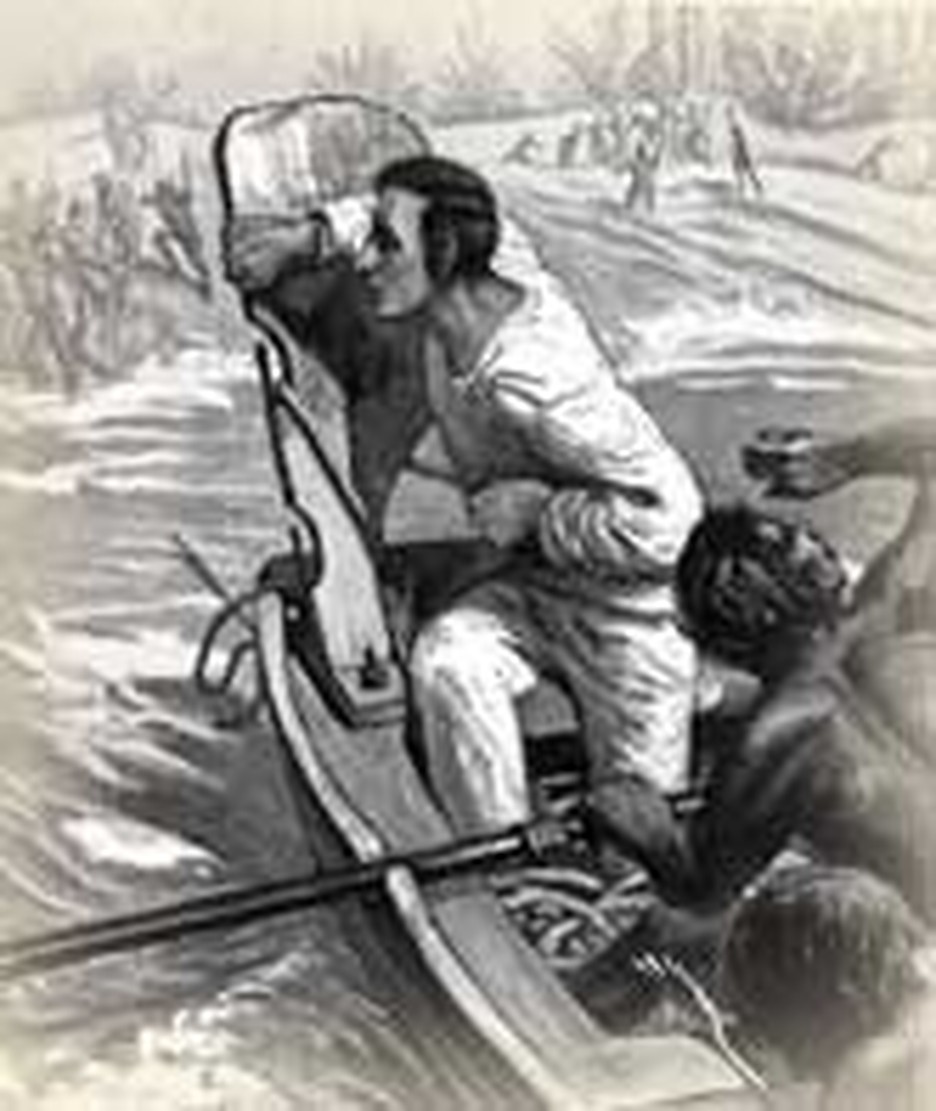
John Coleridge Patteson was deeply distressed. Wicked white sailors were grabbing natives of the Pacific islands as workers in various plantations. "The deportation of natives is going on to a very great extent here as in the New Hebrides and Banks Islands," he wrote. "Means of all kinds are employed: sinking canoes and capturing the natives, enticing men on board, and getting them below, and then securing hatches and imprisoning them. Natives are retaliating." John noted that some islands had few men left. John and other missionaries pleaded to no avail for an end to the dreadful system.
On September 16th, 1871 John's ship lay off the Santa Cruz group, a place where every effort to start a mission work had failed. He wrote, saying, "You can enter into my thoughts, how I pray God that if it be His will, and if it be the appointed time, He may enable us in his own way to begin some little work among these very wild but vigorous energetic islanders." He did not think that he was in much danger, for the islanders remembered him from previous visits, even if they did not comprehend why he came to them.
John was in the Pacific as a missionary. Born in 1827, he was a reared by godly parents who used patience, explanation and other forms of discipline to overcome his natural laziness and flaring temper. In 1855, he heard bishop Selwyn speak of the need for workers in the islands of the Pacific Ocean. He made up his mind to become one of those workers. A year later, he was in the islands.
The young man undertook an enormous amount of work. He toured and preached on the islands many times, mastered twenty-three Polynesian languages and ran the mission college. Selwyn had decided that the way to spread the gospel was to bring young men of the islands to a central location and there to convert them and teach them the gospel to carry back to their own people.
John was a key worker in this plan. Although he worked hard, he was wise enough to realize that results might not appear immediately. "Our Saviour, the first of all Christian Missionaries, was thirty years of His life preparing and being prepared for his work. Three years he spake as never man spake, and did not his work at that time look a failure? He made no mistakes either in what he taught or the way of teaching it, and he succeeded, though not to the eyes of men. Should not we be contented with success like his? And with how much less ought we not to be contented! So! The wonder is that by our means any result is accomplished at all."
But like Jesus or Paul, he worked himself hard--so hard, indeed, under the tropical heat that he became desperately ill. At forty, he spoke of himself as an old man. He was just forty-three when a friend wrote, "Few have had to be at once head of a college, sole tutor and steward, as well as primary schoolmaster all at once, or afterwards united these charges with those of Bishop, examining chaplain and theological professor, with the interludes of voyages which involved intense anxiety and watchfulness, as well as the hardships of those unrestful nights in native huts, and the exhaustion of the tropical climate. No wonder then that he was already as one whose work was well-nigh done, and to whom rest was near."
After John recuperated, he sailed back to the islands. Before going ashore on this day, September 20, 1871, he preached on the death of Stephen which is recorded in Acts chapter Seven. The text proved appropriate. Frustrated natives of Nukapu Island clubbed him to death and attached five knots made out of local fiber to his body, indicating that he was killed in retaliation for five men recently stolen by white sailors. The vengeful natives shot three native mission workers with arrows at the same time. Joseph Atkin, a twenty-nine year old and Stephen Taroniara, about twenty-five years old, died a week later.
John's death achieved what his life never had. Public outcry was so great in England that the practice of forced labor had to stop. The British navy enforced the ban.
Bibliography:
- Johnston, Julia H. Fifty Missionary Heroes Every Boy and Girl Should Know. London: S. W. Partridge, 1899.
- Lambert, John C. The Romance of Missionary Heroism. Philadelphia: Lippincott, 1907.
- McLean, Archibald. Epoch Makers of Modern Missions, by Archibald McLean. New York: Fleming H. Revell company, 1912.
- "Patteson, John Coleridge." The Oxford Dictionary of the Christian Church. Edited by F. L. Cross and E. A. Livingstone. Oxford, 1997.
- Yonge, Charlotte Mary. Life of John Coleridge Patteson: Missionary Bishop of the Melanesian Islands London: Macmillan, 1875; http://justus.anglican.org/resources/pc/ cmyonge/patteson.html.
- Various internet articles such as http://satucket.com/lectionary/John_Patteson.htm.
Last updated June, 2007








